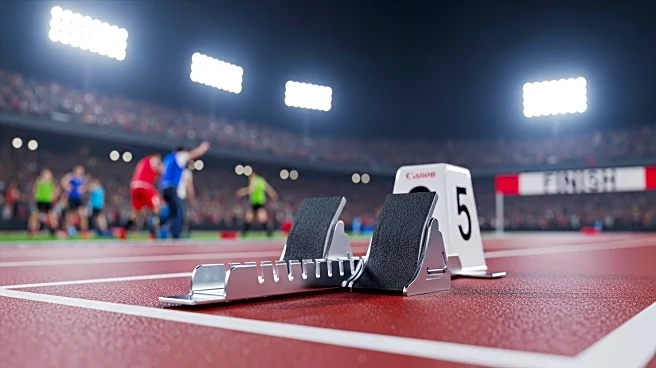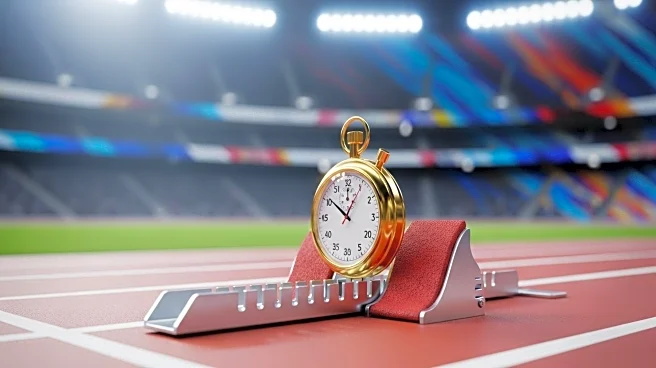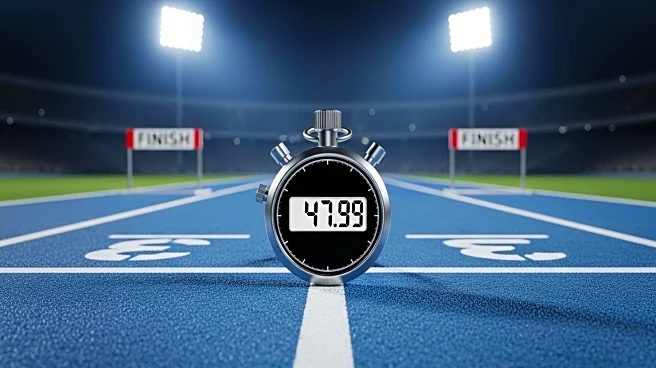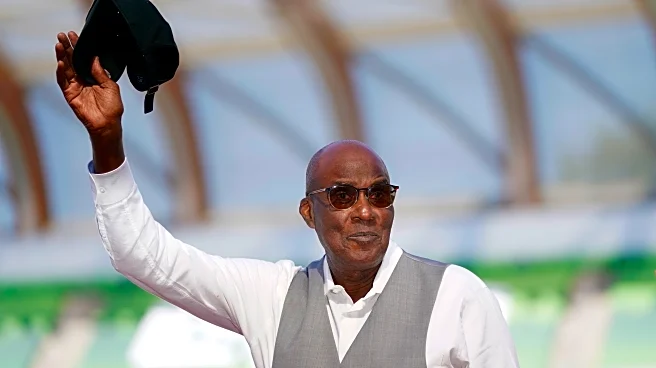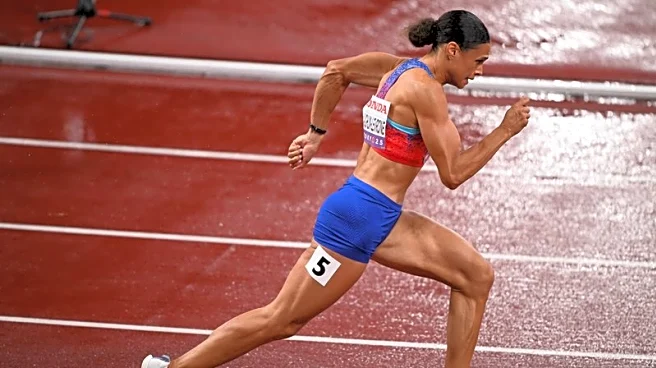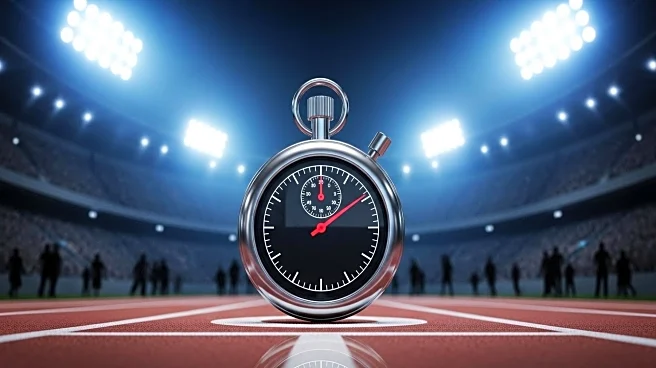What's Happening?
Sydney McLaughlin-Levrone made history at the World Athletics Championships in Tokyo by becoming the first woman in nearly 40 years to run the 400 meters in under 48 seconds. She completed the race in 47.78 seconds, narrowly beating Marileidy Paulino, who finished in 47.98 seconds. This achievement places McLaughlin-Levrone's time as the second fastest in history, behind only Marita Koch's 47.60 seconds set in 1985. McLaughlin-Levrone, who transitioned from hurdles to the 400 meters, was driven by the competition from Paulino, the reigning Olympic and world champion. Her coach, Bobby Kersee, played a significant role in her training, preparing her for this remarkable feat.
Why It's Important?
McLaughlin-Levrone's performance is a significant milestone in track and field, demonstrating the potential for breaking long-standing records. Her achievement not only highlights her exceptional talent but also raises the bar for future competitors in the 400 meters. This breakthrough could inspire other athletes to push the boundaries of what is possible in the sport. Additionally, it underscores the impact of effective coaching and training, as exemplified by Bobby Kersee's guidance. The event also brings attention to the evolving dynamics of women's athletics, where records once deemed unapproachable are now being challenged.
What's Next?
Following her historic run, McLaughlin-Levrone faces the decision of whether to continue pursuing the 400 meters or return to hurdles, where she has previously set records. Her coach, Bobby Kersee, suggests that her recent performance might influence her to attempt breaking the 50-second barrier in hurdles. The track and field community will be closely watching her next moves, as her choices could further redefine the standards in both events. Her future endeavors are likely to attract significant attention and could lead to new strategies and training methods in the sport.
Beyond the Headlines
McLaughlin-Levrone's achievement may have broader implications for the perception of women's athletics, challenging stereotypes and encouraging greater investment in female athletes. It also raises questions about the legacy of past records set under controversial circumstances, such as those during the Eastern Bloc doping era. Her success could prompt discussions on the fairness and integrity of historical records and the importance of clean competition. Furthermore, her journey from hurdles to the 400 meters exemplifies the versatility and adaptability of athletes, potentially influencing how future talents are nurtured and developed.

